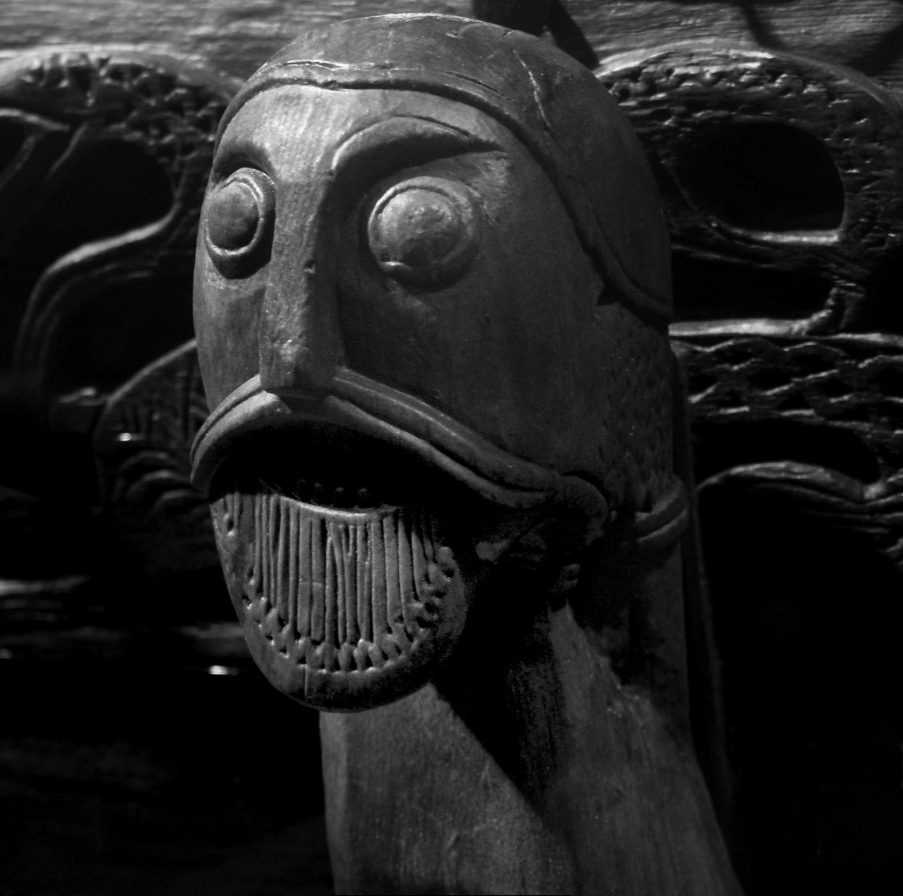The word Viking was used in the Viking Age, but not as the name of a nation. Probably the word emerged as the name of a sea warrior or member of a warrior brotherhood, with its broader meaning developing later. The Vikings were a proud and productive group who sailed across East and West in their fast ships, pillaging, farming, trading, fighting and settling. Here are eight facts you might not know about them, with all the information taken from the Casemate Short History book Vikings by Kim Hjardar.
- The Vikings were keen sportsmen
Egil Skallagrimsson is said to have killed his first opponent during a sporting event at the age of 7. While not all of their athletes were as violent as young Egil, the Viking obsession with sports was closely linked to training young men for battle.
- The Vikings fought in the East too

Scene probably depicting a human sacrifice for Odin. From the Stora Hammars picture stone in Gotland
Once, in the autumn of 943, a Viking fleet sailed with 500 warriors on the Caspian Sea off the coast of Azerbaijan. The warriors succeeded in overcoming the fortified town of Barda, creating such alarm that the ruler of Azerbaijan, al-Marzuban ibn Mohammed, brought 30,000 men to chase them out. During some skirmishes, one cornered Viking decided to climb a tree and stab himself so that he would fell dead on the ground rather than surrendering. Although many Vikings died during the siege, some of the warriors managed to slip out and sail home.
- Vikings sometimes practiced human sacrifice
A central part of Viking religion involved sacrificing to the gods for favorable conditions. If normal sacrifice failed and conditions reached crisis point, some Vikings turned to human sacrifice. In other instances, victims were sacrificed as part of a funeral. For example, in DrÃ¥by, Denmark, where a woman’s grave also included the headless skeleton of a man.
- The Vikings enjoyed listening to jaw bones

The Vikings enjoyed music and poetry, with masters of poetry (Skalds) admired liked modern pop stars. Similarly, various musical instruments were used. For example, sometimes a wooden stick or bone would be rubbed against a jaw bone to create music.
- Vikings attended mass community-gatherings called the thing
Many settlements and parts of the country had their own laws, which were upheld at a thing. A thing was a legislative assembly to which free man were obligated to attend, with fines issued, war councils held and laws reviewed. At one Icelandic thing our sources describe Egil Skallagrimsson organizing a duel with Atle over an inheritance dispute. (photo of Thingveller in Iceland, photo by Kurt Carroll)
- Viking houses had water on-tap
The mightiest chieftains and kings had large longhouses that they used for big feasts. Archaeologists have found remnants of huge postholes that held posts up to 14 meters tall. Some Viking farms even had water in the longhouse, diverted from a nearby stream or spring. Inside the building, the water was covered by planks which were lifted up to get water.
- Society was divided by weapons

Various weapons and armour from Norwegian finds
Viking society was highly militarized, with merit won by bravery and with cowardice causing shame. Free men in the Viking Age were expected to carry weapons. If you were a free farmer you must have a sword, ideally a good sword made by a master smith and decorated with both gold and silver. Such swords had names such as ‘Parasite stick’, ‘Nailer down’, ‘Armour-biter’ and ‘Leg-cutter’.
- The Vikings ruled the Sea
The Vikings used their ships to travel from farm to farm, to go to war and to seek out new trade. The success of Viking ships was enabled by their adoption of sails during the 7th century. While under sail, raiding Vikings would normally stay out of sight from the land. When ready to attack, they would lower the mast and row quickly towards the coasts or up the rivers. The low and narrow Viking ships could be almost invisible and their shallow keels enabled them to land almost everywhere, creating a terrifying element of surprise.


 Follow
Follow